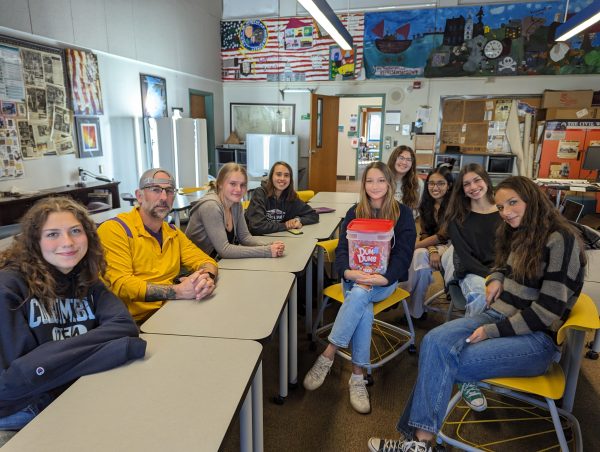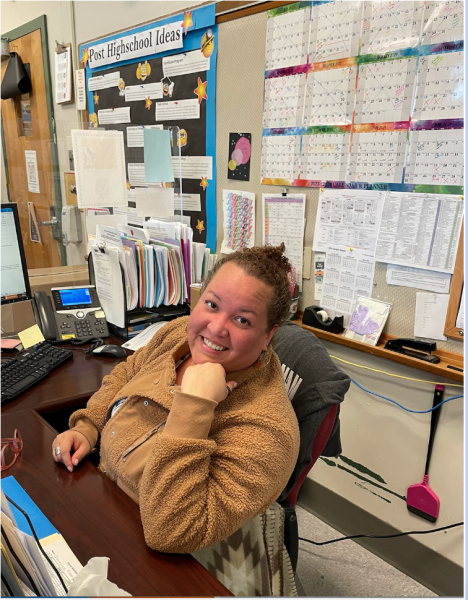School Lunches: A Rhinebeck Reality Investigation
Cardboard lunch trays replaced styrofoam ones several years ago thanks to a student activist. What would you change? Let’s hear from you: [email protected]. Or leave a comment on this page.

RHS cafeteria offers its a la carte options.
The school orders the food, the cafeteria workers prepare the food, the students eat the food. Repeat.
Historically, students have complained about school lunches, and the phrase “school lunch” has certainly developed a negative connotation.
I decided to ask the students and the Rhinebeck Central School District food services manager, Mr. Anthony, how they feel about our cafeteria food.
I set four goals to find out the truth about school lunches:
- find out what students really think about our school lunches
- find out why the student feel this way
- talk to someone in authority to find out their side of the story
- understand how can we resolve these issues
A majority of students asserted they didn’t like our school lunches for numerous reasons.
Alexis Martinez said, “It’s okay, but it could be better. I would like healthier options, like fresh fruit and less carbs.”
One student, who shall remain anonymous, had this to say: “The school lunch is not good. To make it better, it should be less undercooked. I think it’s already healthy.”
Another said, “I don’t usually buy them. I prefer Friday’s pizza; I find it better. But the crust is usually dry. I would like to see more gluten-, lactose-, and nut-free options.” Some students can’t afford to buy due to their dietary restrictions.
A lot of time goes into creating school lunches for more than 600 RHS and BMS students. It takes several hours to prepare, and, depending on the food served that day, kitchen staff might start prepping the day before.
School meal prices vary widely across the country. According to the School Nutrition Association, prices are set by local school districts, normally with school board oversight. It usually boils down to $2.74 for lunch and $1.55 for breakfast.
The typical cost breakdown is as follows: 37% food, 48% labor/benefits, 5% supplies, and 10% other. But our school lunches are self-funded, meaning that students’ lunch money pays for the cafeteria workers’ salary, equipment, and any needed repairs. The school also must follow strict regulations.
Maddie Murphy and I spoke with Mr. Anthony. For those of you who don’t know, he’s the cafeteria manager for Rhinebeck High School, as well as for Pine Plains and Red Hook. We asked him a few pressing questions.
We first talked to him about the taste and variation of our school lunches here at Rhinebeck. I was overwhelmed by his response.
He started by informing us about some of the regulations by which he must abide. As of 2014, a new set of regulations was put into place nationwide. Lunches must have five components: protein, whole grain, fruits, vegetables, and milk. Along with putting 3 of these 5 on every student’s tray, the school also must follow strict calorie regulations.
For example, an average snack must be 200 calories below the regulations of the state. Our food also must be at least 51% whole wheat. There are many other regulation but these are just a few. Due to all of these regulations, the school lunches are carb heavy, but Rhinebeck has on average more protein than a typical school.
I asked if Mr. Anthony if he felt that the variation of lunches that our school provides also accommodates the students that may have dietary restrictions. Anthony responded, “I feel as though we are 80% there,” which is a pretty significant number. But if you have a dietary restriction, speak to the nurse about it, and the school will meet your dietary needs.
As I mentioned earlier the school lunches are self-funded, which means the more the students buy school lunches the more our school has money for other things, such as vending machines.
Vending machines are a hot topic throughout our high school, and I assure you Mr.Anthony is hearing us.
It may be difficult to get vending messages passed by the school board, but that doesn’t mean it’s completely off the table. After all, if we had vending machines, it could increase our school lunch income and benefit everyone.
The biggest take away from speaking with everyone at RHS is, despite how it may seem, everything is not black and white. It takes dialogue and more than one-sided criticism to fix a problem.











